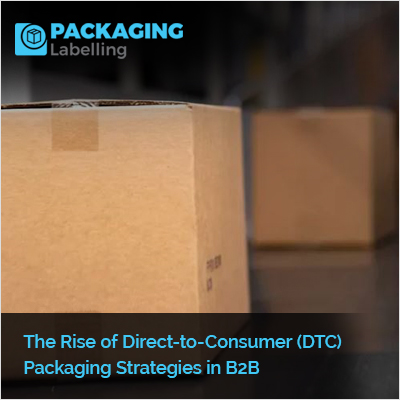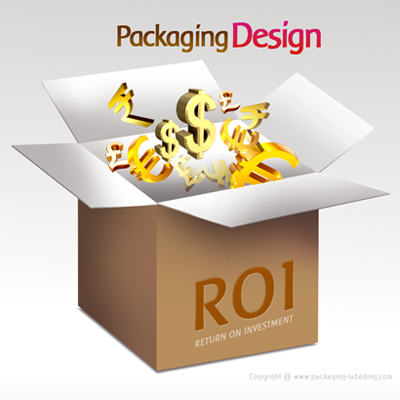Navigating the Shift: The Rise of Direct-to-Consumer (DTC) Packaging Strategies in B2B

Introduction:
In recent years, the B2B landscape has witnessed a significant transformation as companies are increasingly embracing Direct-to-Consumer (DTC) packaging strategies. This shift is not only redefining how businesses interact with their end customers but is also reshaping supply chain dynamics and marketing approaches. In this article, we will delve into the reasons behind the rise of DTC packaging in B2B, explore how companies are adapting, and analyze the impact on both supply chain logistics and marketing efforts.
1. The Driving Forces behind DTC Packaging in B2B
a. Changing Customer Expectations: -
Changing customer expectations, heavily influenced by their experiences in the B2C realm, are compelling B2B companies to reevaluate and adopt Direct-to-Consumer (DTC) packaging strategies. In an era where consumers increasingly expect personalized and seamless interactions, the traditional B2B model is undergoing a fundamental shift. End-users, now accustomed to the convenience and individualized experiences provided by B2C platforms, anticipate similar treatment in their professional transactions. This shift is pushing B2B enterprises to prioritize direct engagement with customers through tailored packaging solutions.
The demand for a more consumer-centric approach is steering B2B companies away from bulk, generic packaging toward strategies that enhance customer satisfaction, foster brand loyalty, and mirror the personalized experiences customers have grown to expect in their everyday B2C interactions. In responding to changing expectations, B2B companies are recognizing the need to infuse their packaging practices with elements of customization, convenience, and a heightened focus on the end consumer's experience.
b. Digital Transformation:-
The advent of digital transformation has ushered in a new era for B2B companies, reshaping the way they engage with end consumers through Direct-to-Consumer (DTC) packaging strategies. Digital technologies and the widespread adoption of e-commerce platforms are playing pivotal roles in facilitating direct connections between B2B enterprises and their end customers. As these businesses embrace online channels to reach consumers directly, the traditional intermediaries are being redefined or bypassed entirely. This shift necessitates a fundamental reevaluation of packaging strategies. The digital landscape allows for a more nuanced understanding of consumer preferences, behaviors, and expectations.
B2B companies are leveraging this data-driven insight to tailor packaging solutions that align with individual customer needs. From personalized branding to streamlined packaging experiences, the integration of digital technologies empowers B2B enterprises to forge direct relationships with end consumers, necessitating an agile and adaptive approach to packaging that resonates with the demands of the digital age. In essence, the digital transformation is not merely a technological evolution but a catalyst prompting B2B companies to rethink and innovate their packaging strategies for a more connected and consumer-centric marketplace.
c. Brand Differentiation:-
DTC packaging in the realm of B2B transactions emerges not only as a logistical strategy but also as a potent tool for brand differentiation. It provides B2B companies with a unique opportunity to transcend traditional norms and create a lasting impact on end consumers. By adopting DTC packaging, businesses can differentiate their brand through a more personalized and memorable experience. This approach involves not just the physical packaging but the entire journey from order placement to product delivery.
B2B enterprises can infuse their packaging with distinct branding elements, ensuring that every interaction reflects the values and identity of the company. This personalized touch not only fosters a sense of exclusivity but also contributes to a more profound connection with the end consumer. Whether through customized packaging designs, personalized messages, or unique unboxing experiences, DTC strategies allow B2B companies to stand out in a competitive landscape, leaving an indelible impression on customers and reinforcing brand loyalty. The ability to create a memorable experience through DTC packaging becomes a powerful differentiator, setting businesses apart in the minds of consumers seeking authenticity and connection in their transactions.
2. Adapting Supply Chains for DTC Packaging
a. Logistical Challenges:-
Transitioning from traditional B2B to Direct-to-Consumer (DTC) packaging introduces a set of logistical challenges that necessitate careful consideration and strategic adjustments in supply chain management. One significant challenge lies in the intricacies of inventory management.
Unlike bulk shipments to retailers or distributors, DTC packaging involves handling individualized orders, often varying in size and specifications. This shift demands a reevaluation of inventory systems to accommodate the increased SKU (Stock Keeping Unit) complexity and ensure real-time visibility into stock levels. Moreover, order fulfillment processes must be adapted to efficiently manage smaller, more frequent shipments to end consumers. This adjustment involves optimizing warehouse operations, reorganizing storage layouts, and implementing technologies like automation to streamline the picking and packing processes. The need for accurate order fulfillment also places a premium on inventory accuracy and precision, emphasizing the importance of robust tracking systems. In navigating these logistical challenges, B2B companies making the transition to DTC packaging must strike a delicate balance between maintaining operational efficiency and meeting the unique demands of individualized, consumer-driven orders.
b. Warehouse and Fulfillment Center Optimization:-
The adoption of Direct-to-Consumer (DTC) packaging strategies by B2B companies necessitates a comprehensive optimization of warehouses and fulfillment centers to efficiently manage the shift from bulk deliveries to smaller, individualized shipments. In response to the unique demands of DTC packaging, businesses are reimagining the layout and functionality of their warehouses. This involves the implementation of technologies like robotics and automation to enhance the speed and accuracy of order picking.
Warehouse optimization also includes the strategic placement of products to minimize travel times within the facility, ensuring swift and efficient processing of individual orders.
Furthermore, B2B enterprises are leveraging data analytics and real-time tracking systems to gain insights into consumer behaviors, allowing for better forecasting and inventory management.
By reconfiguring fulfillment centers to accommodate the intricacies of DTC orders, businesses are not only meeting the expectations of end consumers for faster delivery but also optimizing operational efficiency to adapt to the evolving landscape of modern supply chain dynamics.
c. Technology Integration:-
The successful implementation of Direct-to-Consumer (DTC) packaging strategies in B2B companies relies heavily on the seamless integration of advanced technologies into supply chain processes. One key aspect is the utilization of sophisticated inventory management software that provides real-time visibility into stock levels, order statuses, and demand forecasting. This software enables businesses to adapt to the variability inherent in individualized DTC orders by optimizing inventory levels and reducing the risk of stockouts or overstock situations.
Additionally, automated packaging systems play a crucial role in streamlining DTC supply chain processes. These systems, equipped with robotics and smart packaging solutions, enhance efficiency and accuracy in order fulfillment. Automated packaging not only accelerates the packaging process but also ensures consistency in product presentation, contributing to a positive and standardized brand experience for end consumers.
The integration of such cutting-edge technologies represents a strategic investment for B2B companies seeking to meet the demands of DTC packaging while simultaneously enhancing overall supply chain agility and responsiveness.
3. Impact on Marketing Strategies
a. Building Direct Customer Relationships:-
DTC packaging in the realm of B2B transactions serves as a transformative avenue for B2B companies to establish direct relationships with end consumers, ushering in an era of targeted marketing and personalized communications. Unlike traditional B2B models where the interaction primarily involves intermediaries, DTC strategies enable businesses to engage directly with their ultimate customers. This direct line of communication opens up opportunities for tailored marketing initiatives that resonate with the specific needs and preferences of individual consumers.
B2B companies can leverage the data collected from DTC transactions to gain valuable insights into customer behavior, allowing for the creation of targeted and personalized marketing campaigns. Through personalized communications embedded in packaging materials, businesses can connect with customers on a more intimate level, fostering a sense of brand loyalty and trust. DTC packaging, therefore, becomes a powerful tool not only for delivering products but for building enduring and meaningful relationships with end consumers, positioning B2B companies as customer-centric entities in the marketplace.
b. Brand Storytelling through Packaging:
Successful brand storytelling becomes an art form, with packaging design and messaging playing a crucial role in conveying brand values. The packaging becomes a tangible representation of a brand's identity, and companies are increasingly using this medium to tell compelling stories that resonate with consumers. Examples abound of brands effectively using DTC packaging to share their narratives: from eco-friendly packaging materials reflecting a commitment to sustainability to intricate designs conveying craftsmanship and quality. Each element, from colors to typography, contributes to the narrative.
For instance, a technology company might use innovative packaging to reflect its cutting-edge approach, while a heritage brand may opt for nostalgic designs evoking tradition and timelessness. Through thoughtful and intentional packaging design, B2B companies can connect emotionally with consumers, fostering a deeper understanding of and affinity for the brand. The packaging becomes a vessel for brand storytelling, transcending its functional role to create memorable and immersive experiences for end consumers.
c. Utilizing Data for Targeted Marketing:-
The adoption of Direct-to-Consumer (DTC) packaging by B2B companies not only facilitates direct transactions with end consumers but also unlocks a wealth of valuable data that can be harnessed for more targeted and effective marketing campaigns. In the age of data analytics, every DTC transaction generates insights into consumer behavior, preferences, and purchasing patterns.
B2B companies can leverage this data to create highly targeted marketing campaigns that resonate with individual customers. By understanding the specific needs and interests of their audience, businesses can tailor promotional materials, offers, and communications to enhance relevance and impact. This data-driven approach not only increases the likelihood of capturing consumer attention but also contributes to long-term customer engagement and loyalty.
The ability to deliver personalized messages and offers based on DTC transaction data represents a powerful strategy for B2B companies, allowing them to strengthen their relationships with end consumers and stay ahead in a competitive marketplace.
4. The Future of DTC Packaging in B2B
a. Trends to Watch:-
As B2B companies continue to navigate the evolving landscape of Direct-to-Consumer (DTC) packaging, several emerging trends are shaping the future of this strategy. One notable trend is the increasing emphasis on sustainability, with consumers placing a premium on eco-friendly packaging materials and minimal environmental impact. B2B companies can position themselves for future success by incorporating sustainable practices into their DTC packaging, aligning with the growing demand for socially responsible and environmentally conscious business practices.
Additionally, the integration of smart packaging technologies, such as QR codes, RFID, and augmented reality, is gaining momentum. These technologies enhance the interactive and informational aspects of DTC packaging, providing consumers with engaging experiences and real-time product information. Staying ahead of these technological trends allows B2B companies to differentiate themselves and meet the expectations of a tech-savvy consumer base. Moreover, personalization remains a key trend, with consumers seeking unique and customized experiences.
B2B companies can leverage data analytics to tailor packaging designs and messaging, catering to individual preferences. By proactively embracing these trends, B2B enterprises can not only meet current consumer expectations but also position themselves as innovative and forward-thinking leaders in the realm of DTC packaging, ensuring sustained success in the dynamic marketplace.
b. Challenges and Solutions:-
The adoption of Direct-to-Consumer (DTC) packaging by B2B companies brings forth a set of challenges that necessitate careful consideration and strategic solutions. One major challenge is the adjustment to a more complex and individualized supply chain, leading to potential difficulties in inventory management, order fulfillment, and distribution logistics. To address these challenges, B2B companies can invest in advanced inventory management systems, leveraging technology to enhance real-time visibility and control over stock levels.
Additionally, optimizing fulfillment processes through warehouse automation and smart logistics solutions can streamline the transition to DTC packaging, mitigating challenges associated with smaller, more frequent shipments. Another hurdle lies in maintaining brand consistency across diverse consumer touchpoints.
B2B companies can overcome this challenge by developing comprehensive brand guidelines that extend to DTC packaging, ensuring a harmonized brand experience. Moreover, data security and privacy concerns may arise as companies collect and utilize consumer data for personalized marketing. Implementing robust data protection measures and transparent communication about data usage can build trust with consumers. By acknowledging these challenges and proactively implementing tailored solutions, B2B companies can successfully navigate the complexities of DTC packaging adoption and position themselves for sustained success in meeting evolving consumer demands.
Conclusion:
As B2B companies continue to adapt to the changing landscape, the adoption of Direct-to-Consumer packaging strategies stands out as a pivotal move. The impact on supply chains and marketing efforts is substantial, requiring a strategic approach to navigate successfully through this transformation. By embracing DTC packaging, B2B companies can not only meet evolving customer expectations but also position themselves as industry leaders in the dynamic marketplace.









